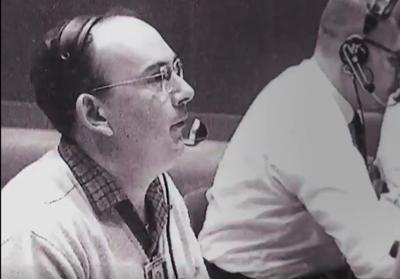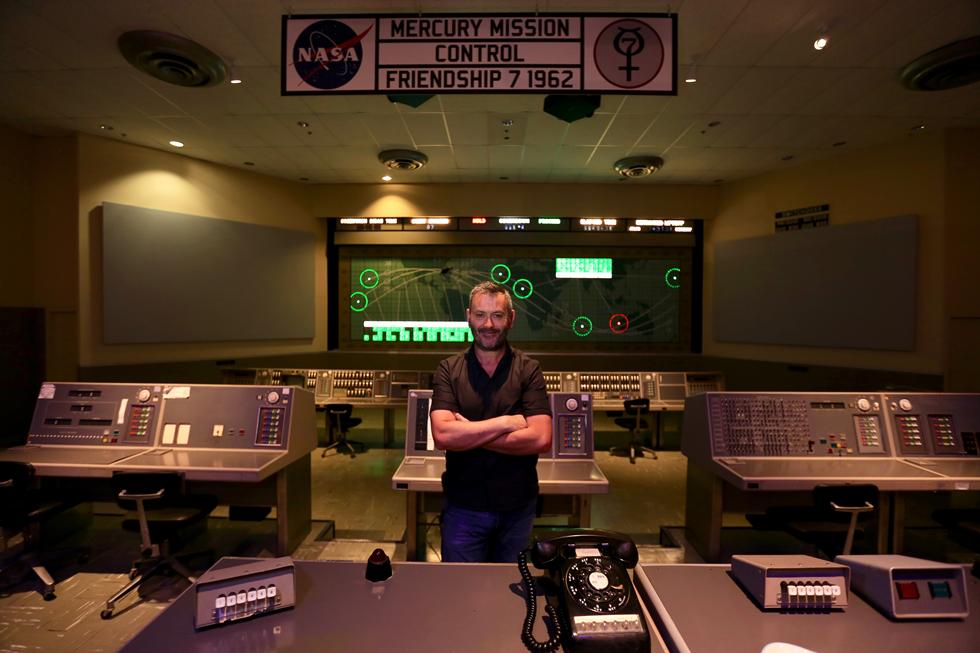Rocket Man: Welsh hero of NASA’s moon landings

When Neil Armstrong made his giant step onto the Moon in July 1969, the billions watching it on TV had a University of Southampton graduate to thank for seeing him do it - a Welsh engineer who played a major part in the space mission story.
Tecwyn Roberts' story is told for the first time in a new documentary presented by comedian and BBC Radio Cymru presenter Tudur Owen.
The film Rocket Man: NASA’s Welsh Hero is part of the BBC's celebration of the 50th anniversary of the moon landings and sees Tudur reveal all about the shy boy from Anglesey who helped astronauts walk on the moon. The documentary features remastered NASA archive footage from the time to showcase mankind’s finest achievement and celebrate the little known engineer from Llanddaniel Fab, Anglesey, and his part in making history.
After receiving his degree in Aeronautical Engineering in 1948 from the University of Southampton (then known as University College of Southampton), Tecwyn later became a spaceflight engineer at NASA. During the 1960s and 1970s, he played important roles in designing the Mission Control Center at NASA's Johnson Space Center in Houston, Texas, and creating NASA’s worldwide tracking and communications network.
For the Apollo missions, he was tasked by NASA with solving the problem of how to communicate with the spacecraft over the vast distance between the Earth and the Moon. His answer was to position a chain of enormous satellite dishes around the world so that contact could be maintained as the Earth rotated. Within just two years, Tecwyn created the Deep Space Communications Network which finally made moon missions possible.
He is also credited with coining the phrase ‘A-OK’ making those three letters the universal symbol meaning ‘in perfect working order’. Apparently NASA engineers used A-OK it during radio transmission tests because "the sharper sound of A cut through the static better than O".
Tudur Owen said, “Tec Roberts’ story is incredible and I feel so privileged to be finally able to tell it to the people of Wales.
“This humble and gifted man from Anglesey is regarded by NASA as one of the pioneers of manned space flight,” Tudur continued. “My mission is to make sure that his work and legacy is recognised here in Wales. I am so excited to be able to tell Tec Roberts’ story. The whole world knows about the moon landing, but only a select few know about the crucial role this unassuming and gifted Welshman played in mankind’s greatest achievement.”
Becoming NASA’s first Flight Dynamics Officer, Tecwyn was instrumental in the Apollo missions and Tudur travels to America to find out more about him. Three of his former colleagues and fellow engineering legends - including former Director of the Johnson Space Center, Christopher Colombus Kraft Jr – emphasise the integral role Tecwyn played in putting man on the moon.
“Tec really knew what the hell he was doing,” Kraft recalled. “I feel like I was damn fortunate to have that man in my pocket. He was like a brother to me; a little better. People like Tec Roberts, who you could trust implicitly and know that were going to do a good job, were rare and he was one of those. I thank him for it and I don’t think he ever got the credit,” he concluded.
George Abbey, Former Director of the Johnson Space Centre, added: “We couldn’t have done the landing without him. He was responsible for all the communications that we had, the television we saw, the data that came in and he had to make sure it happened and happened the right way. I’m very proud of him.”
Glynn Lunney, Former Flight Director on Apollo programmes who started as an apprentice under Tec, said: “I’m very proud to have been a friend of his. They were great times. Tec was a man that was easy to like, he was gentle and we loved him. One of the things that struck me very quickly about Tec, [was that] he was positive about things. He was positive about finding solutions and he didn’t get uptight about things. I wrote somewhere in my notes once in my life that all 22 year-olds ought to have a couple of years working for a guy like Tec. If they got that then they were fixed for life.”
Tecwyn Roberts (1925-1988)
After leaving Beaumaris Grammar School in Llanddaniel Fab, Anglesey, Wales in 1942, and serving as an engineering apprenticeship with the aero- and marine-engineering company Saunders-Roe in Anglesey, Tecwyn served briefly in the Royal Air Force. In 1944, he was released by the RAF and returned to work with Saunders-Roe in Southampton before transferring to the Isle of Wight in 1946. At the time, he also attended the University of Southampton (then known as Hartley University College) obtaining a degree in Aeronautical Engineering in 1948 and receiving the Institute of Mechanical Engineers Special Award.
In the early 1950s, Tecwyn left England for Canada to work for aircraft manufacturing company Avro Canada near Toronto where he was a member of the engineering team that developed the CF-105 Arrow, a highly-advanced delta-winged interceptor aircraft. When the Avro Arrow project was cancelled in 1959, he moved to the United States to join NASA’s Space Task Group at the Langley Research Centre in Virginia. Within two years of that move, Tecwyn became NASA’s first Flight Dynamics Officer at the Mercury Control Centre where his tasks focused on controlling and planning adjustments to the trajectory of the spacecraft.
In 1962, he became head of the Mission Control Centre Requirements Branch playing a key role in the design and further development of the Mercury Control Centre at Cape Kennedy and the subsequent Mission Control Centre at the Manned Spacecraft Centre in Houston, Texas. Later in 1962, Tecwyn was appointed head of Manned Flight Division at the Goddard Space Flight Centre in Maryland where he eventually was put in charge of NASA’s Manned Space Flight Network – a set of tracking stations built to support the Mercury, Gemini, Apollo and Skylab missions.
In 1969, Tecwyn received the NASA Exceptional Service Medal for his work in support of the Apollo 8 flight – the first to visit and orbit the moon. In 1976, he was elected as a Fellow of the American Astronautical Society and four years later, he received the NASA Distinguished Service Award. In 1984, he was honoured with the Robert H Goddard Award of Merit, the highest level of recognition the Goddard Space Centre can bestow on its employees.
The BBC Wales documentary Rocket Man: NASA’s Welsh Hero is broadcast on Thursday, 18 July, 2019 on BBC One Wales at 10.35pm. The programme will be available on the BBC iplayer.


